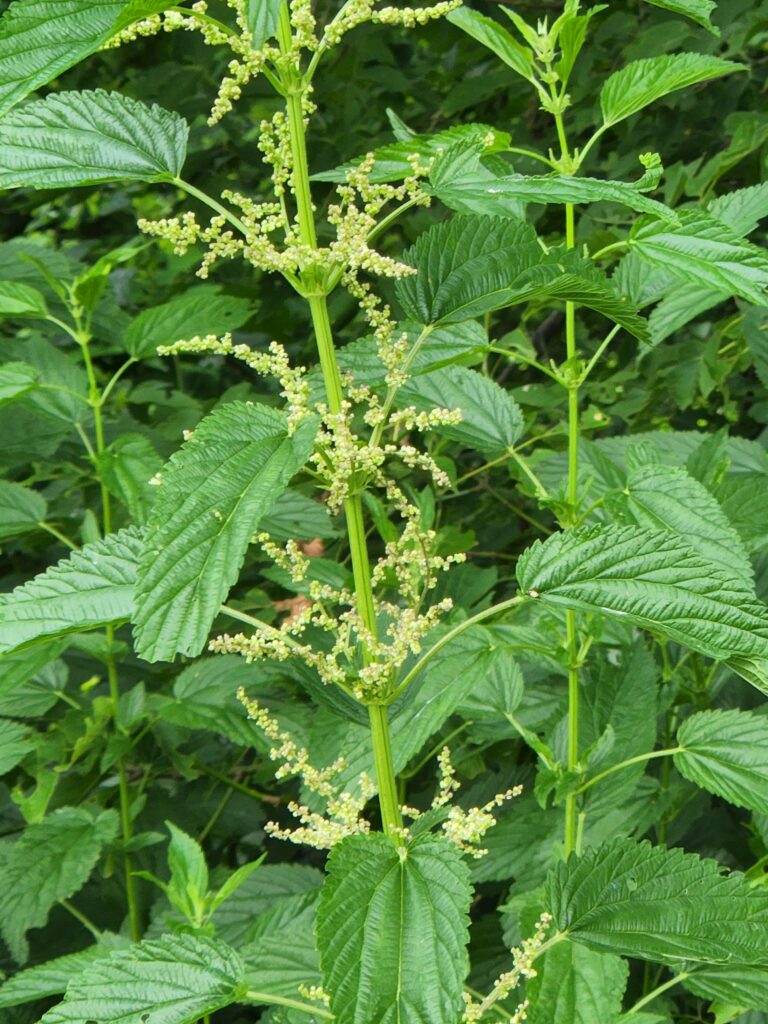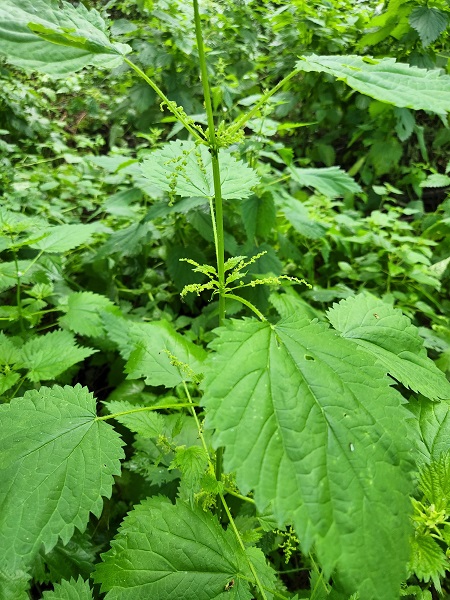Foraging for Nettle: A Nutritious and Sustainable Food Source
General Comments:
Among the many plants that can be foraged, nettle (Urtica dioica) is one that stands out for its versatility and abundance. Although often considered a weed, nettle has been used for centuries for food, medicine, and fiber. In this article, we will explore the various aspects of foraging for nettle, its description, territory, habitat, edible parts, how and when to harvest, conservation status, notes of interest and a nutrition chart based on studies from the USDA.
Common Names
Nettle is known by many names depending on the region and language. Some of its common names include stinging nettle, common nettle, giant nettle, devil’s leaf, and burn weed. The scientific name, Urtica dioica, derives from the Latin word “uro,” which means “to burn,” referring to the plant’s stinging hairs.
Description
Nettle is a perennial plant that can grow up to six feet tall. As can be seen in the picture, it has serrated, heart-shaped leaves that are covered with tiny, hollow stinging hairs that release histamine and other chemicals when touched, causing a painful (as some may say) rash. The stems are also covered with stinging hairs. The plant produces small, greenish flowers that are wind pollinated. Nettle is one of a very few plants that can be identified in total darkness – just walk thru a patch!!

Territory
Nettle is native to Europe, Asia, and North Africa, but has been naturalized in many parts of the world, including North America, Australia, and New Zealand. It grows in temperate and tropical climates and can thrive in a variety of soil types.
Habitat
Nettle grows in a variety of habitats, including fields, forests, meadows, and disturbed areas such as roadsides and abandoned lots. It prefers moist, nitrogen-rich soil and can often be found near water sources. I have often found it near staghorn sumac and elderberry.
Edible Parts
Despite its reputation for causing painful rashes, nettle is a nutritious and versatile food source. The young leaves and shoots are edible and can be eaten raw or cooked. They are rich in vitamins A and C, iron, calcium, and protein. The leaves can be used in soups, stews, pesto, teas, and as a substitute for spinach in recipes. The roots can also be eaten and are said to have a nutty flavor.
How to Harvest
When harvesting nettle, it is important to wear gloves and long sleeves to avoid getting stung. The best time to harvest is in the spring when the young shoots and leaves are tender and before the plant flowers. Cut the leaves and stems with scissors or pruning shears and place them in a bag or basket. Be sure to only take what you need and leave enough for the plant to regenerate.
Conservation Status
Nettle is not currently listed as endangered or threatened, but its populations can be affected by habitat destruction, over-harvesting, and competition from invasive species. When foraging for nettle, it is important to do so sustainably and responsibly to ensure its continued availability.

Notes of Interest
Nettle has been used for centuries for its medicinal properties, including treating arthritis, allergies, and urinary tract infections. It is also a popular ingredient in traditional herbal remedies and teas. Nettle has been used as a fiber source for clothing and textiles since ancient times and was even used to make fishing nets in medieval Europe.
Foraging for nettle can be a rewarding and sustainable way to obtain fresh, nutritious food. Despite its stinging hairs, nettle is a versatile plant that can be used in a variety of dishes and has many medicinal and cultural uses. When foraging for nettle, it is important to do so responsibly and sustainably to ensure its continued availability for others.